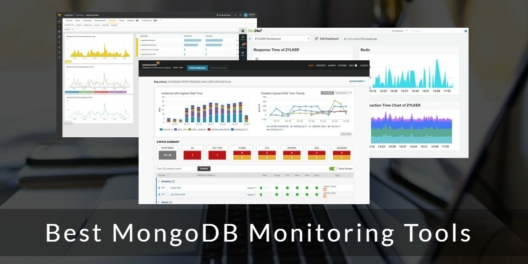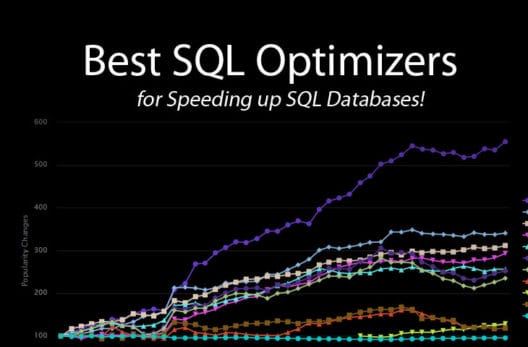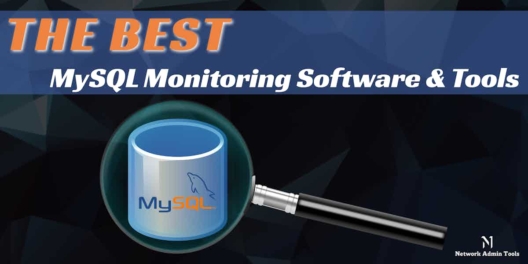Discover the best MongoDB Monitoring Tools on the market. Full reviews plus links to free trials and downloads.
The Best MongoDB Monitoring Tools
The Best SQL Query Optimizer Tools & Software for Speeding up MySql & More!
Optimizing SQL for Speed in order to Speed Up Queries and Latency is one of the Most Crucial and Important Things For Your Database
The Best MySQL Monitoring Software & Tools for Performance Tuning & Management of SQL Servers
Today we’re going to Review the Top MySQL (SQL) Management and Performance Monitoring software and tools that will help you dial in your SQL servers as well as fine tuning their performance and speed. MySQL is a powerful Open-Source Database Management System that helps companies to run a range of different applications such as websites […]
Getting phpMyAdmin to Work With Gentoo
We emerged Apache to start, and noticed that PHP didn’t work correctly. Kinda makes sense, but ya gotta start somewhere. We’ve relied on RPMs in the past, as in this article. There are some gotchas. Agatha’s Gentoo workstation is a year old or so, now, so emerge mod_php and emerge phpmyadmin didn’t quite work as […]
Using pgAdmin to Administer PostgreSQL
In this article, we compiled and installed PostgreSQL. PgAdmin is a development and administration tool for PostgreSQL that runs under GNU/Linux, FreeBSD, and Windows 2000/XP. We decided to try one of the Slackware beta snapshots available here. Agatha is running Gentoo on her main workstation, and our best guess was that the Slackware binary would […]
PostgreSQL Initial Install
PostgreSql is an Open Source project with a BSD license. It is a mature and stable database with transactions, stored procedures, and rollback. PostgreSQL is available for win32;however, we will be compiling and installing this on a GNU/Linux system. First, let’s grab the source from here and decompress: root@srv-1 src # tar -xjf postgresql-8.0.0beta1.tar.bz2 root@srv-1 […]
Creating Sorted Reports For MySQL Databases With HTML/PHP
Do you have a fondness for greenbar? Well, here is a report that alternates colors in a similar fashion. Woohoo!! Greenbar!!! See this article for details on the database we are running the report against, and our other articles on HTML/PHP. A book we like that really helped us is Web Database Applications with PHP […]
Deleting Records in MySQL Databases With HTML/PHP
In this article, we updated a troubling record. Well, let’s just delete the whole record. In fact, let’s delete the record with HTML and PHP!! Easy as pie. First we need a little HTML: <html> <head> <title>SystemsDoc Delete</title> </head> <body bgcolor=”white”> <form method=”POST” action=”sysdocdelete.php”> <table> <col span=”1″ align=”right”> <tr> <td><font color=”blue”>UID to delete:</font></td> <td><input type=”text” […]
Updating Records in MySQL Databases With HTML/PHP
In this article we added a record to our systems database. We made a mistake, though, and would like to update the record so that the date is correct. Here is the current date: mysql> select manu, model, deploy_date, sernum, sysversion from systemsdoc -> where UID=8; +—————–+———+————-+——–+————–+ | manu | model | deploy_date | sernum […]
Adding Records to MySQL Databases With HTML/PHP
In this article, we loaded up our new MySQL database with data. Adding records from a CLI tool is a bit cumbersome. PHP is a great way to add records to a MySQL database. For more information on PHP, see our articles here. The first step in using PHP is to set up the database […]
Importing Spreadsheets Into MySQL
In this article, we created a database in MySQL, as well as a sample table called systemsdoc. This article is for you screwheads that still document your systems with Excel spreadsheets. Eventually, we will show you how to run reports and update the database via customized web pages. First, though, we need to get the […]
Creating a Database With MySQL
Let’s say we want to track our servers using a database instead of those nasty spreadsheets that many of us use. MySQL is a pretty simple and cheap way to get started. We are going to use a blank root password in these examples to ease typing, however, you should change the root password following […]
Copying Table Structures With MySQL
We often have to get basic tables in place for our MySQL web backend. To create a new database: [root@main gg]# mysql -p Enter password: Welcome to the MySQL monitor. Commands end with ; or \g. Your MySQL connection id is 8374 to server version: 3.23.54 Type ‘help;’ or ‘\h’ for help. Type ‘\c’ to […]
Free Database Tools for Linux – Part Two: SQSH
I ran across SQSH when I was building the Perl DBD:Sybase module to connect to MS SQLServer databases for monitoring purposes. Both SQSH and DBD:Sybase can use a set of free libraries to connect to SQLServer instead of the Sybase client libraries. I thought this was pretty darn cool. I also thought it was cool […]
Free Database Tools for Linux – Part One: TOra
If you work with commercial databases Oracle or Microsoft SQLServer, there’s a couple of free tools you ought to know about. For Oracle admins, users, and developers, there’s TOra, the Toolkit for Oracle. By our estimation, it’s as good as TOAD and free is a VERY good price. TOra runs on Linux, Solaris, and Windows. […]
Determining Your MDAC Version
Microsoft has a tool called the Data Access Component Checker that will determine the version of MDAC running on your system. It is a simple application that will display a dialog like this when run: For more information on the Microsoft Data Access Component checker, see this page.
Removing Grants in MySQL
Grants are how MySQL handles user permissions to databases. See our article here for information on showing the grants. To delete grants, you can directly modify the mysql.user table: mysql> select User,Host from mysql.user; +——+—————————+ | User | Host | +——+—————————+ | are | 10.10.10.10 | | are | 10.10.10.11 | | are | 10.50.100.0/255.255.255.0 […]
Showing All Grants With MySQL
Users are identified with both a user and a host. If you want to show all of the grants for all users, you need to first look at the mysql.user table: [usr-1@srv-1 ~]$ mysql -u root -p Enter password: Welcome to the MySQL monitor. Commands end with ; or \g. Your MySQL connection id is […]
Configuring the MySQL ODBC Connector
In this article we installed the MySQL ODBC Connector. Now, let’s configure the connector. We are configuring this on a Windows XP machine. Find the Data Sources (ODBC) configation tool. On XP this is in Administrative Tools: In the ODBC Data Source Administrator, click add: Select the MySQL ODBC Driver and click Finish: You should […]
Installing the MySQL ODBC Client
If you would like to communicate with MySQL via ODBC, grab the connector from here. The installation is quite straightforward. When you run the install application, read the warning and click next: Accept the license agreement if you wish to continue: Make sure you have uninstalled any existing MySQL ODBC driver. If you have, click […]





